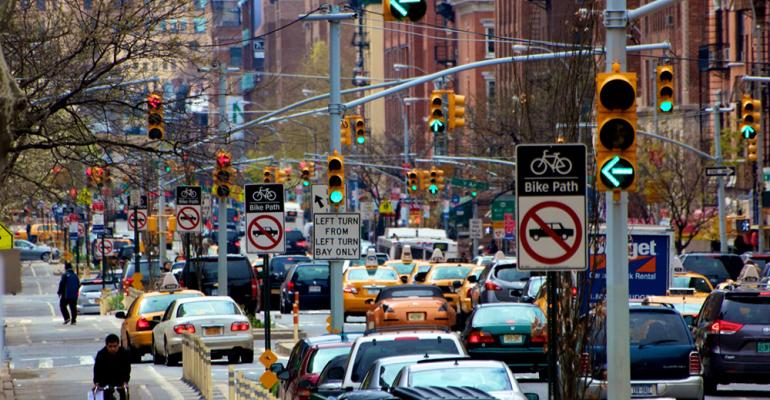In one of those “Mission Impossible” scenarios, a new California research project claims more than $100 trillion in public and private spending could be saved between now and 2050 if the world ended vehicle use in cities and opted instead for public transportation, walking and cycling.
The report released by the University of California, Davis, and the Institute for Transportation and Development Policy also says such a switch would see reductions in carbon-dioxide emissions reaching 1,700 megatons a year in 2050.
It also includes analysis by the International Council on Clean Transportation asserting that an estimated 1.4 million early deaths associated with exposure to vehicle tailpipe emissions could be avoided annually by 2050, if governments required the strongest vehicle pollution controls and ultralow-sulfur fuels.
“The study shows that getting away from car-centric development, especially in rapidly developing economies, will cut urban CO2 dramatically and also reduce costs,” says report co-author Lew Fulton, co-director of NextSTEPS Program at the UC-Davis Institute of Transportation Studies.
The report, funded by the Ford Foundation, ClimateWorks Foundation and Hewlett Foundation, is being released in advance of the Sept. 23 United Nations Secretary-General's Climate Summit, where many countries and corporations will announce voluntary commitments to reduce greenhouse gas emissions, including new efforts focused on sustainable transportation.
“Transportation, driven by rapid growth in car use, has been the fastest growing source of CO2 in the world,” says Michael Replogle, co-author of the study and ITDP managing director for policy. “An affordable but largely overlooked way to cut that pollution is to give people clean options to use public transportation, walking and cycling. This expands mobility options, especially for the poor, and curbs air pollution from traffic.”
The authors calculated CO2 emissions and costs from 2015 to 2050 under a business-as-usual scenario and a high-shift scenario where governments significantly increase investments in rail and clean-bus transportation and provide infrastructure to ensure safe walking, bicycling and other active forms of transportation. It also includes moving investments away from road construction, parking garages and other steps that encourage car ownership.
Under the high-shift scenario, mass transit access worldwide is projected to more than triple for the lowest-income groups and more than double for the second-lowest groups.
Transportation in urban areas accounted for about 2,300 megatons of CO2 in 2010, almost one-quarter of carbon emissions from the transportation sector. Rapid urbanization – especially in fast developing countries such as China and India – will cause these emissions to double by 2050 in the business-as-usual scenario.
Among the countries examined in the study, three stand out:
- U.S.: The world leader in urban passenger transportation CO2 emissions, the U.S. is projected to lower these emissions from 670 megatons annually to 560 megatons by 2050 because of slowing travel growth combined with sharp improvements in fuel efficiencies. But a high shift to more sustainable transportation options, along with fewer and shorter car trips related to communication technologies substituting for transportation, could further drop those emissions to about 280 megatons.
- China: CO2 emissions from transportation are expected to soar from 190 megatons annually to more than 1,100 megatons, due in large part to the explosive growth of China's urban areas, the growing wealth of Chinese consumers and their dependence on automobiles. This increase can be slashed to 650 megatons under the high-shift scenario, in which cities develop extensive clean bus and metro systems. The latest data show China already is sharply increasing investments in public transport.
- India: CO2 emissions are projected to leap from 70 megatons now to 540 megatons by 2050, also because of growing wealth and urban populations. But this increase can be moderated to only 350 megatons under the high-shift scenario by addressing crucial deficiencies in India's public transport.





